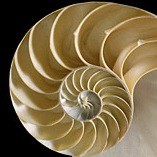A few years ago I published this analysis of Surat Al-Kawthar 108. Surprisingly, I just ran into the same sura analyzed on YouTube in an entirely different way with amazing results!
This video is by Binimad Al-‘Ateeki, who’s done some pretty impressive numerical miracle videos on the Quran, among other things. What’s interesting here is that his video shows us the same sura with some amazing results involving the number ten. Whereas I got what I thought were pretty fascinating results involving the number nine! So how did this happen?
Continue reading


















